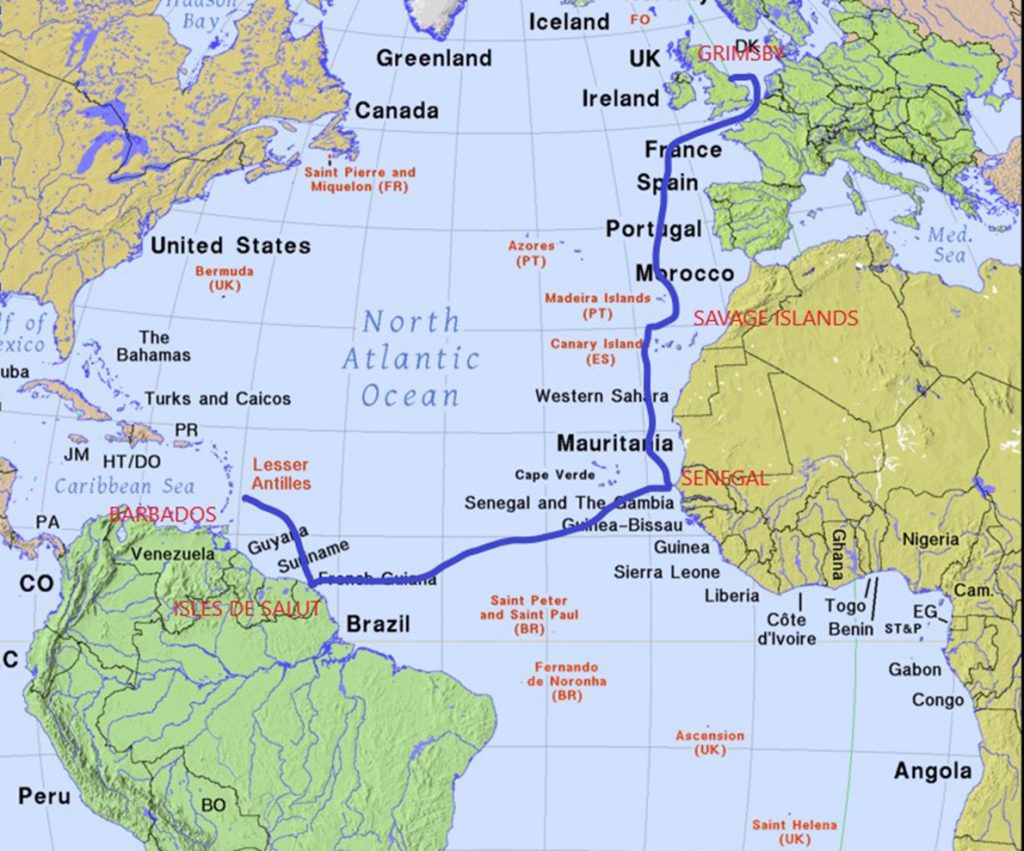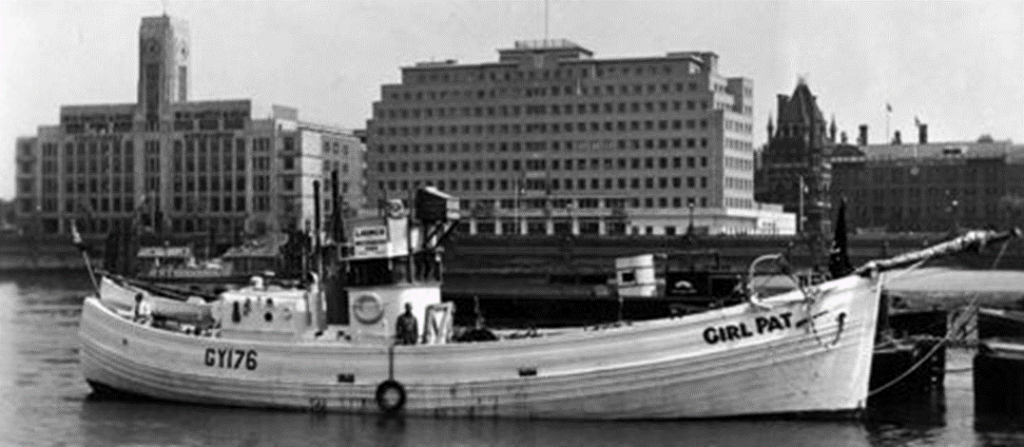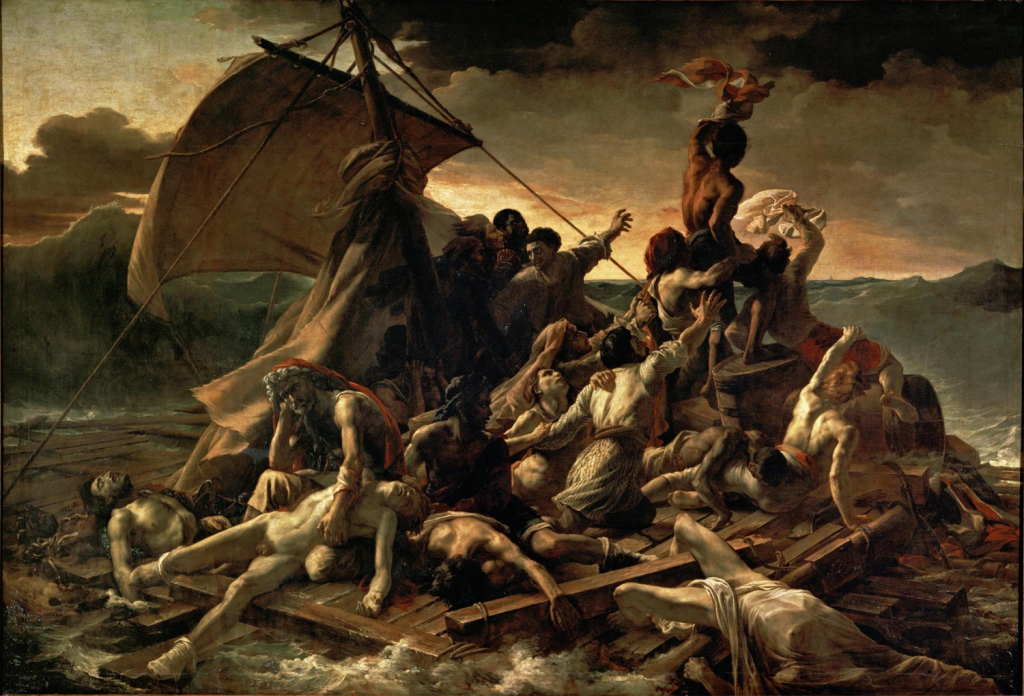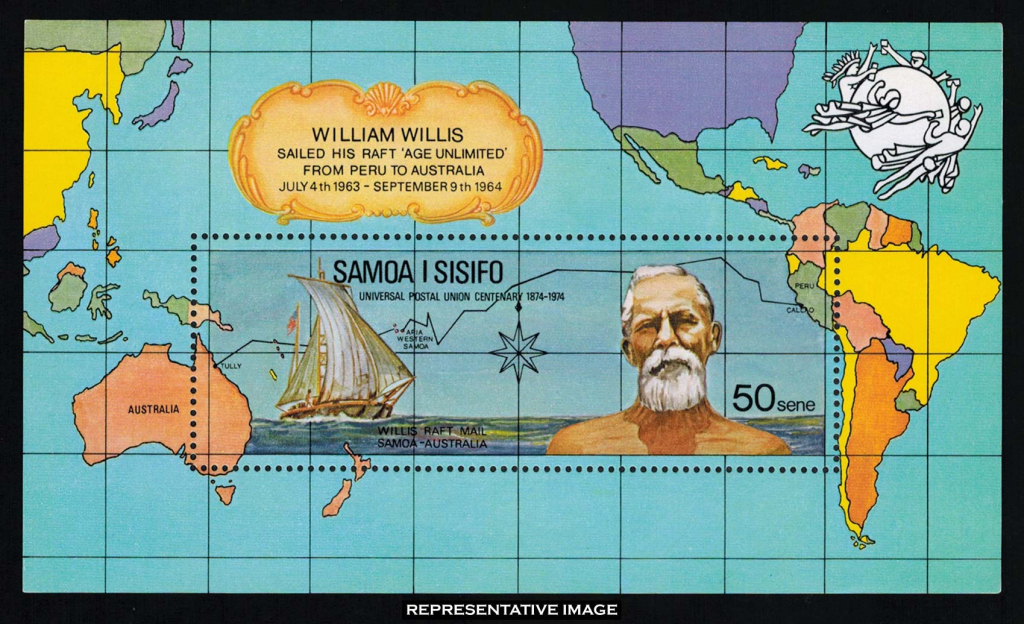At a recent meeting, Andy Shand related to us a number of stories that he has uncovered behind some postage stamps. The three most interesting ones are related here.
Girl Pat – a GRIMSBY fishing trawler

In 1936 there was a media sensation when the Girl Pat’s captain took it on an unauthorised transatlantic voyage. They used a school atlas and compass to navigate 6000 nautical miles.


The escapade ended in Georgetown, British Guiana, with the arrest of the captain, George “Dod” Orsborne, and his brother. The pair were later imprisoned for the theft of the vessel. The picture above shows the Girl Pat in Liverpool, having been returned to the UK.

Orsborne maintained in court that the owners had instructed him to get rid of the ship, as part of a scheme to obtain its insurance value. This claim was dismissed by the court. Years later, in his memoirs, Orsborne told a different, uncorroborated story: in absconding with Girl Pat he had been carrying out a mission on behalf of British Naval Intelligence, connected with the outbreak of the Spanish Civil War in July 1936.
Do check the story out as it is fascinating and too detailed to put here.
Raft of the Medussa (The French frigate ran aground Arguin Reef, Senegal)

French frigate Medusa, a tragedy caused by gross incompetence..
On June 17, 1816 an expedition of four vessels sailed from Rochefort for Senegal. It was commanded by Hagues Deroys, Vicomte de Chaumerys, who was inefficient and lacking in knowledge of navigation and seamanship. He was given this command because he was a friend of Louis XVIII.
Being faster than the other ships, the Medusa left her convoy astern. Sailing 100 miles off course, de Chaumerys sighted Madeira where fresh provisions were taken on board. From Madeira he sailed to Teneriffe to await the arrival of the other three vessels. From Teneriffe the expedition set course for Senegal.
De Chaumerys’ instructions told him that to the north of Cape Blanco a reef known as Arguin Reef jutted out about 100 miles from the coast. Once clear of this reef he could expect to reach Senegal safely.
Of importance are M. Picard, a French civil servant, and a M. Richefort of the Cape Verde Philanthropical Society. The former, who had been wrecked on this reef on an earlier voyage, proffered advice to de Chaumerys, but was ignored. M. Richefort, a suave individual claimed he had a greater knowledge of the dangers ahead, and his flattery of the expedition’s leader so impressed de Chaumerys that he handed over command of the vessel to Richefort against the advice of his officers.
On July 2, 1816 Cape Blanco was sighted and course was altered towards the land. The other ships, hoisted warning signals. The Medusa did not reply. Wiseley the others decided not to follow on the new course and stood away from the coast. These three vessels reached Senegal,
The Medusa was wrecked on the Arguin Reef. There were 400 people on board. Her six boats could only accommodate 250 persons, so a raft was built of ship’s spars and timber. The only supplies placed on the raft were casks of wine. Midshipman Coudin, incapacitated by a leg injury, became the raft’s commander. At the outset the raft was towed by two of the boats, but the tow ropes parted (it is also claimed that they were cut) and the raft, with 146 men and one woman, was abandoned to its fate.
Dozens were washed into the sea by a storm, while others, drunk from wine, rebelled and were killed by officers. When supplies ran low, several of the injured were thrown into the sea, and some of the survivors resorted to the Custom of the Sea, engaging in cannibalism. Seventeen days later 15 survivors, all that remained of the 147, were rescued by the brig Argus, which encountered them after sailing from St. Louis to search for the raft. The design of the stamp is based on an oil Painting by Jean Louis Audie Theodore Gericault, painted in 1818-19 and depicts the sighting of the Argus by the survivors on the raft.

William Willis Rafting from Peru to Australia
Shortly into his (6,700-mi) journey across the Pacific, nearly all of Willis’ freshwater supply was contaminated. For the majority of his crossing, Willis survived on rainwater, raw flour, condensed milk, and small cups of seawater. During one particularly nasty storm, a large wave tossed a 2.7-meter (nine-ft) shark onto The Seven Little Sisters. Willis fought the shark off and eventually pushed it back into the ocean, but the shark severed an artery in Willis’ forearm—which the sailor somehow managed to suture himself.

But nothing could compare (in Willis’ mind, anyway) to the horror of losing his feline travel companion. Which is why each time rough seas threw Willis’ cat overboard, the grizzled old sailor flung himself after it and, without so much as a rope or life preserver, swam against the full force of the Pacific Ocean to rescue his friend.
Miraculously, Willis, his cat, and his living-room-sized raft reached American Samoa perfectly intact after having traveled (2,200 mi) further than Thor Heyerdahl’s Kon-Tiki. For an encore, at age 70, Willis sailed a raft from South America to Australia—a journey of 17,700 kilometers (11,000 mil).
This was followed by three attempts to cross the Atlantic in a small, apparently not very suitable, open sailboat. The first two attempts were turned back by poor conditions and miserable progress. Willis disappeared on the third attempt, although his boat was recovered.
The Vote of Thanks was given by George Newlands, who whilst not a stamp collector, knew of a number of relevant books:
‘Girl Pat’ – The Voyage of the Girl Pat: an authentic account. by ‘Skipper Orsborne’. published in 1937
‘Medusa’ – Death Raft: the human drama of the Medusa shipwreck. by Alexander McKee. published 1976 (just one of several books on the story)
William Willis – The Epic Voyage of the ‘Seven Little Sisters’, a 6,700 mile voyage alone across the Pacific. by William Willis. published in 1955. He also wrote his autobiography, A Hundred Lives of an Ancient Mariner, in 1967
Then two books about stamp stories from the talk, but not included here:
‘Maine’ – How the Battleship ‘Maine’ was Destroyed. by Hyman George Rickover. published in 1995. plus other books on the dastardly deed (allegedly) and the subsequent Spanish-American war
Calliope (pronounced…..I think we know) The First Commission of HMS Calliope, January 25th 1887 – April 30th 1890. by Captain E.W. Swan. privately printed in 1939 (50th anniversary of the hurricane)
Why not join us at our next meeting?
New members are always welcomed at the Club. If you are 50 or over, retired, or nearing retirement, (men only, I’m afraid, sorry ladies) you can attend three meetings as a guest and find out what a relaxed and friendly time we have. That’s plenty of time to decide whether to become a Club member or not. Please check out our programme and email info@largsprobus.org.uk if you wish to attend as a guest, or to enquire about joining.
Largs Probus Club will next meet in the Willowbank Hotel on Wednesday 23rdJuly at 10am when Barbara Graham with talk about Alexander Graham Bell.
